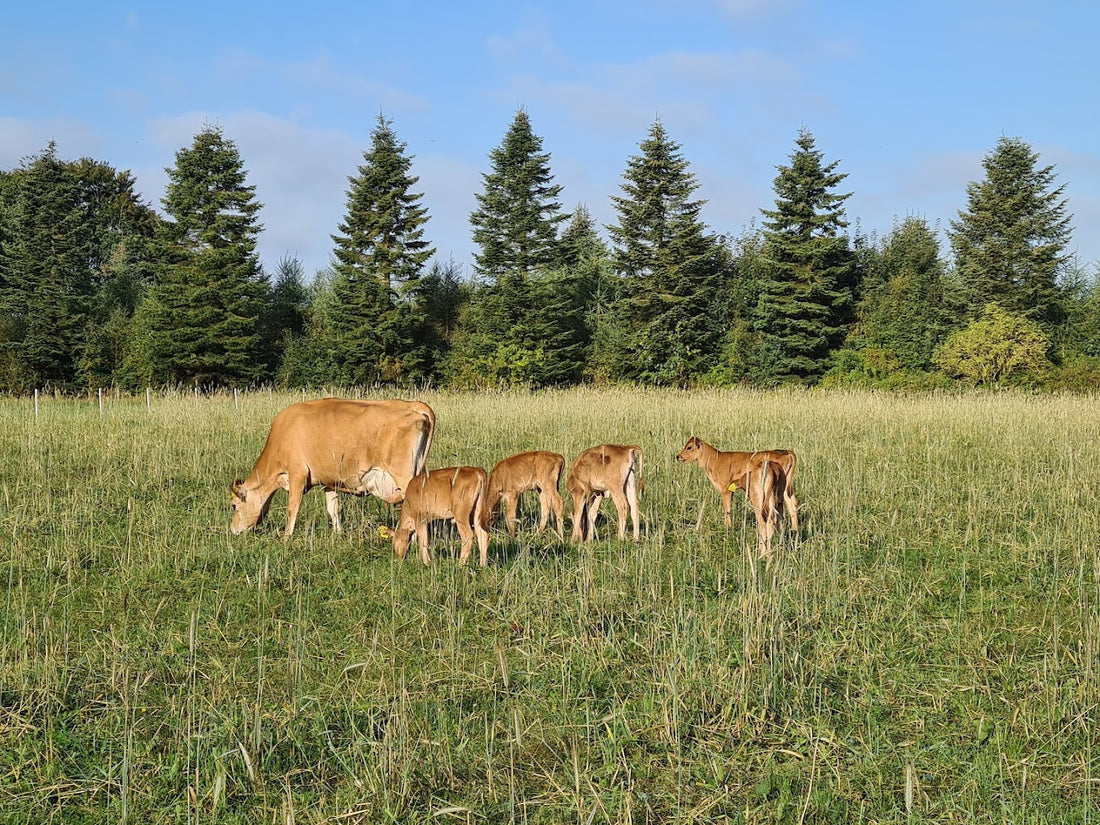When you should take attention to calves heat stress?
There is only a little research about calves heat stress but already 23 ºC causes that calves uses more and more energy to stay cool. The latest research (J.Laporta, May 2024) says that temperature-humidity index (THI) takes attention to humidity along with the temperature of environment. That makes it more detailed forecast about environmental heat stress.
For example in Florida calves begin to appear signs about heat stress already in 19 ºC whereas in Wisconsin signs about heat sress shows up until 20,5 ºC. There is more heat and humidity in Florida that exposes calves to heat stress more early.
Symptoms about calves heat stress is easily identifiable:
- Calves body temperature rises above 39,5 ºC
- Reduced movement
- Reduced eating
- Increased water consumption
- If calf has been dried up, urine excretion reduces and manure becomes more solid
- Increased respiratory rate
- Breathing mouth open
- More standing and less laying
Relieve calf’s heat stress
1. Heat stress relieving starts already drycow period. According to researches maternal heat stress affects even cow’s second generation descendants. Milk produktion may decrease in descendants even 2,2 – 6,5 kilogrammes per day if dam had experienced rough heat stress. The decline in milk produktion may continue even until third lactation period. (J.Laporta, Aug 2020).5. Take into account the natural ventilation of the calf house in the positioning of the building (wind direction and other buildings) and in the curtain walls. If necessary, ventilation should be supplemented by fans and ventilation tubes for the calf house. The functionality, maintenance and cleanliness of these should be checked at regularly. It is important to monitor and record the temperature of the calf house daily.

Ventilation tube
6. Research shows that calves with fresh, clean water grow better and get less sick. Water should be changed daily. To combat heat stress, calves try to even out their body temperature by drinking plenty of water. In hot weather, they can drink 6-12 litres of water a day.
7. It is a good idea to keep fresh calf fodder available. Calf fodder should be offered in small portions and uneaten feed should be replaced with fresh feed frequently. If necessary, a divider can be placed between the water bucket and the feed to prevent water splashing and spoiling the feed.
8. Works that causes stress to animals like dehorning and transferrings should be done in mornings. Then calves body temperature and environment temperature is the lowest point.
9. In hot weather, calves eat less, so it would be a good idea to increase the number of milk feeding sessions from 2 to 3 times a day.

To ensure healthy growth of calves, it is good to minimise the effect of heat stress in the summer heat.
10. Time the feeding of calves before and after the highest temperature of the day.
11. Particular attention should be paid to the cleanliness of watering and feeding equipment in warm weather. Unwashed pacifiers, buckets, mixing and dispensing equipment are a breeding ground for harmful bacteria.
12. The calves' lying area must be kept clean and dry. In summer, the best bedding material is sand or sawdust in particular, as they do not retain as much heat. In addition, flies do not reproduce in sand.
”What we know about heat stress in dairy calves” J. Laporta, University of Wisconsin, May 2024
”Late-Gestation heat stress impairs daughter and granddaughter lifetime performance” J.Laporta, Journal of Dairy Science, Aug 2020



